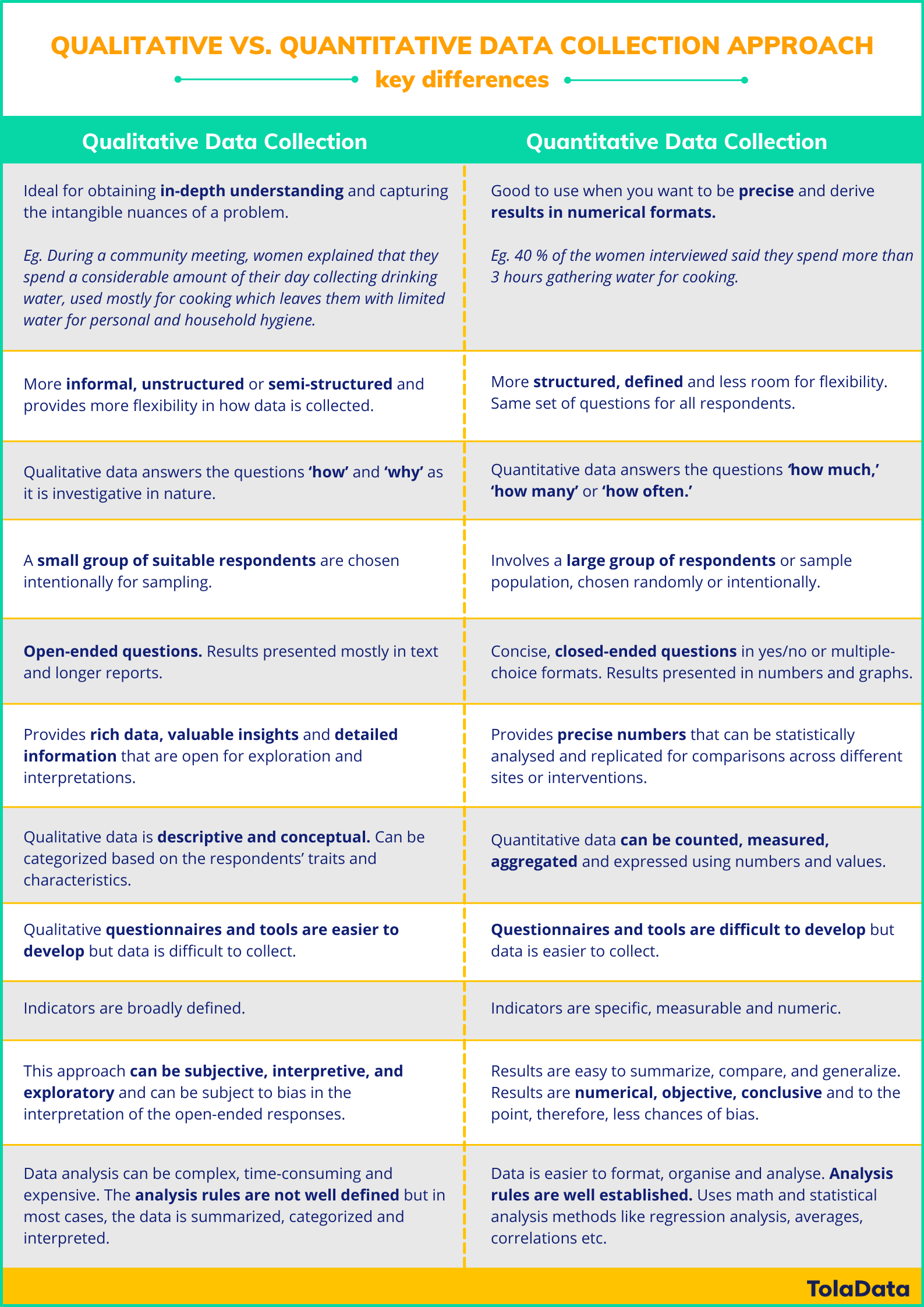

Such data is obtained using interviews or observations. The typical data analyzed qualitatively include color, gender, nationality, taste, appearance, and many more as long as the data cannot be computed. In a quantitative analysis the characteristics of objects are often undisclosed.

Oftentimes, the researcher may have a relationship with the participants where their characteristics are disclosed. And it is subjective, descriptive, non-statistical and exploratory in nature.īecause qualitative analysis seeks to get a deeper understanding, the researcher must be well-rounded with whichever physical properties or attributes the study is based on. Unlike with quantitative analysis that is restricted by certain classification rules or numbers, qualitative data analysis can be wide ranged and multi-faceted. The analysis can be used in conjunction with quantitative analysis or precede it. Qualitative analysis can get a deeper understanding of “why” a certain phenomenon occurs. This type of data is about the understanding and insights into the properties and attributes of objects (participants). Qualitative analysis is concerned with the analysis of data that cannot be quantified. That is why the methods are often used simultaneously. For instance, it can be challenging to uncover relatively new concepts using quantitative analysis and that is where qualitative analysis comes into the equation to find out “why” a certain phenomenon occurs. There are, however, limitations in quantitative analysis. Quantitative data can be classified as continuous or discrete, and it is often obtained using surveys, observations, experiments or interviews. The data can be expressed in a tabular form or any diagrammatic representation using graphs or charts. Quantitative analysis is generally concerned with measurable quantities such as weight, length, temperature, speed, width, and many more. Quantitative analysis normally leaves the random and scarce events in research results whereas qualitative analysis considers them. However, more clarity can be obtained by concurrently using qualitative and quantitative methods. It seeks to understand the occurrence of events and then describe them using statistical methods. Quantitative analysis is more objective in nature. This is a shortcoming of qualitative data analysis because of limited generalization of findings.

The advantage of quantitative analysis the findings can be applied in a general population using research patterns developed in the sample. Data is chosen randomly in large samples and then analyzed. Quantitative analysis is often associated with numerical analysis where data is collected, classified, and then computed for certain findings using a set of statistical methods. This article uncovers the key differences between these two research analysis methods. Moreover, there are overlaps in quantitative and qualitative analysis. They have some errors, and so using them concurrently can compensate for the errors each has and then produce quality results.

The methods can be used independently or concurrently since they all have the same objectives. Qualitative and quantitative analysis are two fundamental methods of collecting and interpreting data in research.


 0 kommentar(er)
0 kommentar(er)
